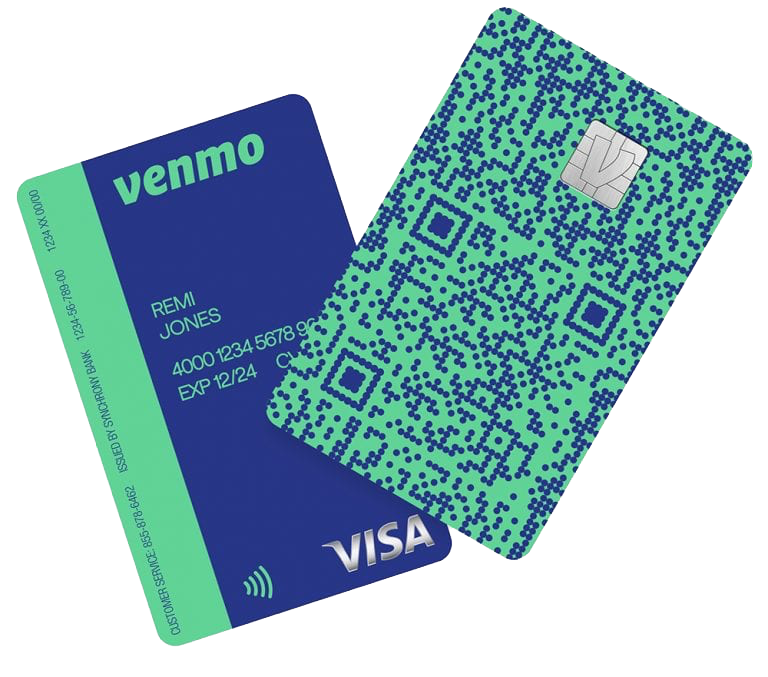Nov
23
Credit cards are so last-millennium. That is, they were. They’re enjoying a resurgence.

Perhaps you recall, about a year and a half ago, when tech leader Apple executed a seemingly giant, antithetical, technological backward leap with the introduction of its own plastic credit card.*
But why not? Google had already introduced—then withdrew—and now plans to reintroduce—its own debit card. Moreover, reports Finextra, “The Google Pay app has been given a makeover, growing from a simple payments tool to a full-blown financial management service and, from early next year, a gateway to a full bank account.”

Not to be outdone, Venmo, too, has announced a credit card. Venmo promises its card will deliver “a different user experience.” (Ironically, every card promises a different experience—like all the others.) A recent PYMNTS.com article cites Venmo Senior VP Darrell Esch:
The Venmo card will give cash back to customers based on where they actually spend money—categories that can change month to month. “We’re effectively gaming it on the customer’s behalf,” Esch said. “They’ll get the maximum reward for their maximum spend category in any given cycle. It changes with their behavior from cycle to cycle.”
Yet Venmo is arguably late to the party. PayPal introduced its own credit card three years ago. Square launched a debit card at the beginning of 2019. And there is no end to co-branded cards. There’s one for every interest, whether you wish to accrue airline miles, points toward purchases, or support your favorite charity.
Cards go full circle
If I had to summarize the history of credit cards in a single sentence, I might come up with this: They came, it looked like they were fading, and now they’re coming back stronger.
Early charge cards were made from cardboard or metal. I used the word charge on purpose. These were not true credit cards, for they required customers to pay off their balance each month. By the mid 20th century, it seemed as if every substantial business issued its own charge card. The idea wasn’t for issuing merchants to generate interest-generating balances but to create loyalty. The thinking was that customers would be more likely to return to the issuing department store or gas station.
We can thank a forgotten wallet for the first charge card not confined to a single merchant or chain. Chagrined at having dined out only to realize his wallet was still at home, businessperson Frank McNamara introduced the Diner’s Card in 1950. It was a “travel card,” for use within the hospitality industry. American Express introduced its own travel card in 1958.
In time, cardboard and metal charge cards gave way to plastic credit cards. Proprietary cards continued, but “credit card” soon largely referred to two or three major players that had attained near-universal acceptance. By “two or three major players,” I refer to Bank of America with its BankAmericard, later rechristened Visa, and, on its heels, Interbank’s Master Charge, later rechristened MasterCard. These were true credit cards, for they allowed cardholders to carry balances and pay interest. Their use wasn’t limited to a single store, chain, or industry, and it wasn’t long before they were all but universally accepted worldwide. In the 1970s, a store that didn’t accept Visa or Mastercard wasn’t unusual. Within 10 years, it was unthinkable.
Although proprietary cards and credit departments continued, Visa, Mastercard, the later expanded American Express Card came to dominate. In 1985, the Sears Financial Network introduced Discover Card, a would-be threat to Visa and Mastercard. It’s still around, but it never attained equal footing.
For a while in the early 21st-century, it looked as if the rise of digital banking and RFID technology was going to render the “card” in “credit card” quaint if not obsolete. Not so fast. Today, credit cards—physical ones with near-universal acceptance—are coming back in a big way.
And they’re coming from multiple players. Or are they? Mastercard powers PayPal’s, Square’s, and Apple’s cards, and Visa powers Venmo’s card.
Either way, cards yield a wealth of data. Card Expert℠, a product of my employer, Fiserv, provides a great example. According to a Fiserv press release, it …
… aggregates key data and delivers actionable insights in easy-to-use, interactive dashboards, providing financial institutions with the information they need to make critical business decisions about the performance and profitability of their card portfolio … Organizations without a data analyst on staff will appreciate the robust business intelligence capabilities of Card Expert … [it] allows users to type in portfolio questions using natural language to launch powerful custom-data queries … proactively monitors critical key metrics and sends real-time, data-driven alerts; [and provides] instant intelligence on portfolio metrics that are exceeding or underperforming.
The market still seems to appreciate a tangible versus a virtual card, along with the convenience of whipping out a card as opposed to fiddling with an app on a portable device, no matter how convenient.
Cards, it seems, have gone full circle more than once and in more than one way. Chances are they will never disappear.
* Meanwhile, Loup Ventures avers that “Apple Pay is fast becoming a must-have payment option for retailers and banks.”